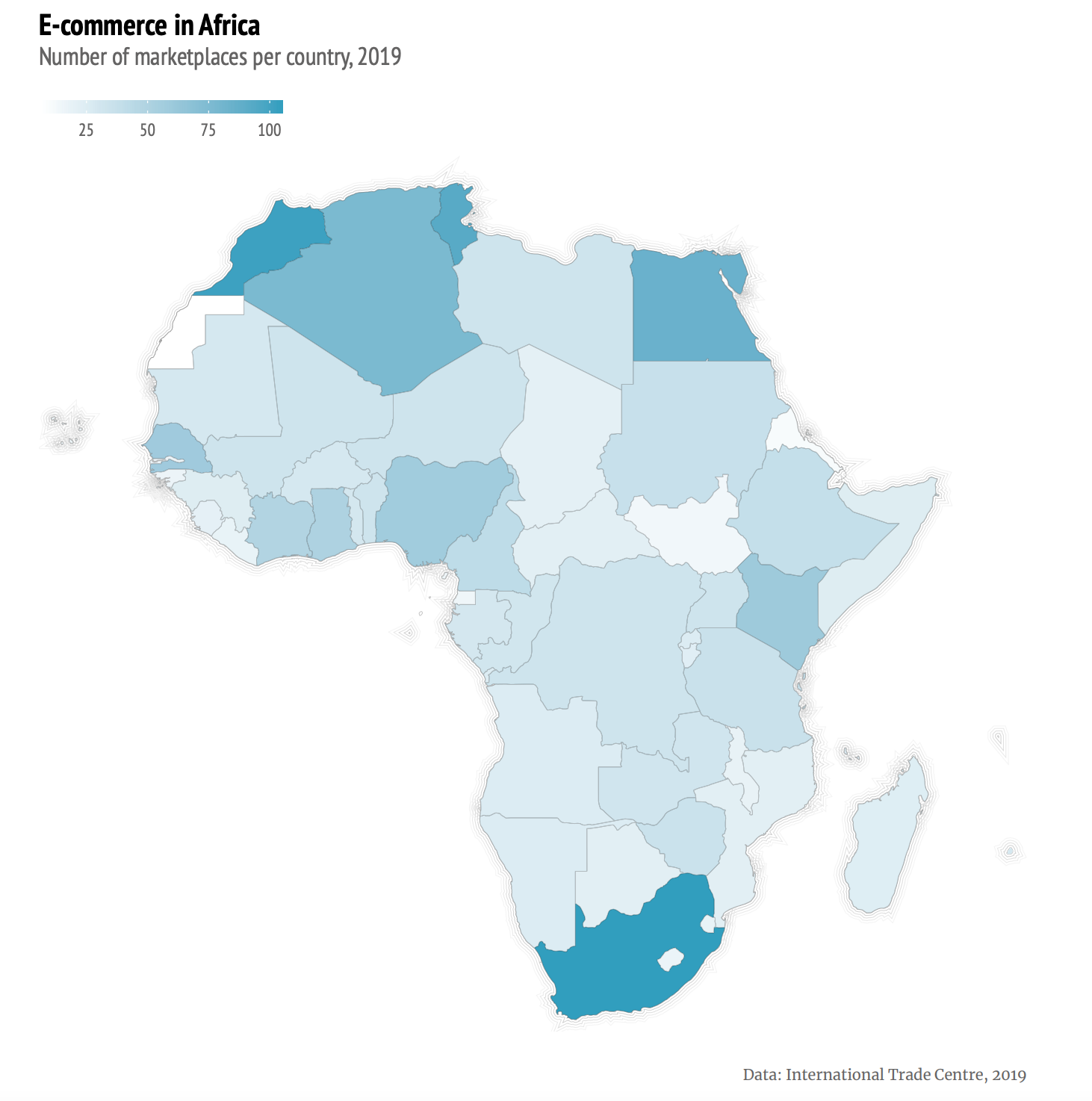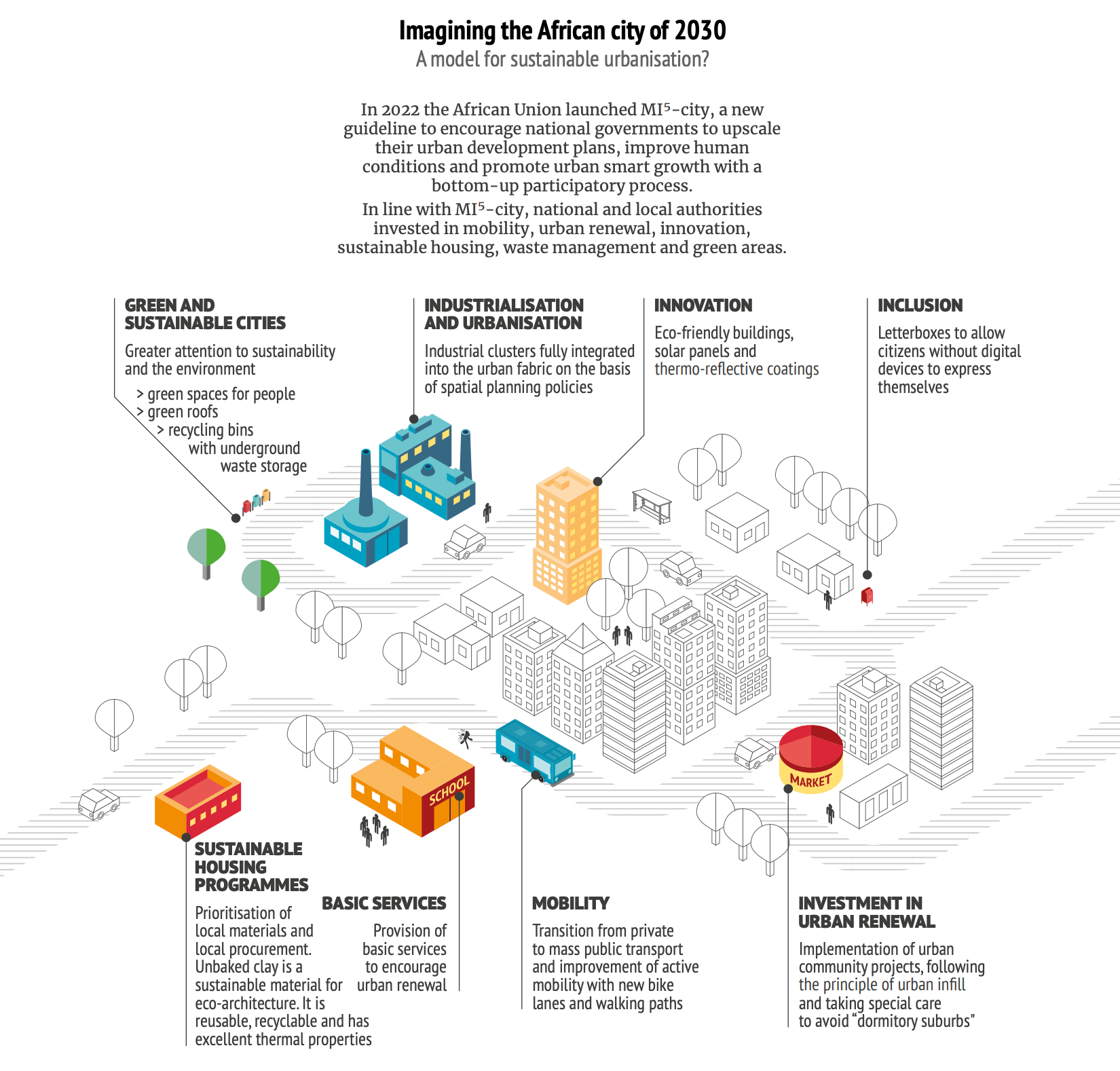A future vision of Africa 2030 also points to opportunities for entrepreneurs
What might Africa look like in 2030?
Good futures research (produced by credible think tanks) that is focused on opportunities on the African continent is a rare thing.
Precisely for that reason - we jumped at the chance to finally spend some time to read a piece of futures research that was produced last year by The European Union Institute for Security Studies (EUISS).
The African Futures 2030 document is a fairly plausible vision of the future of the continent with the premise that:
'continental integration is critical for Africa’s economic recovery and future resilience, the publication portrays what an integrated and prosperous African continent could look like in 2030, thanks to the full implementation of the AfCFTA (the African Continental Free Trade Area as a key factor driving economic, technological and societal transformations in Africa in the next decade).
It describes the pathways, milestones and initiatives that can lead to such a desirable scenario in ten selected, cross-cutting areas, showing how coordinated policy action in these sectors is essential to achieve trade integration.'
Essentially the report paints a main one, rosy future scenario of the continent in 2030, which they have called the 'African Miracle' (feel free to read their normative scenario for yourself starting on page 16 of the report); accompanied by a further ten 'milestone scenarios' that give further insights as to how they ideal future was achieved.
Success milestones
Along with the scenario what is of extreme high-value to entrepreneurs is an analysis of what led to such a favourable outcome for the continent. On any journey into the future, certain milestones will be passed that can be identified as the key factors contributing to the eventual outcome offered.

These milestones include:
- Environment - developing new solutions to better coordinate in the face of climate change.
- Digitalisation - transnational engagement and cooperation via new digital platforms and innovations will create the conditions under which the economic prosperity of the continent will be unlocked.
- Urbanisation - Africa is rapidly urbanising, but urbanisation is not per se a negative phenomenon and its impact mostly depends on how it is managed.
- Governance - 'Good governance of regional public goods can foster growth and distribute its benefits widely through a domino effect. For instance, regional agreements can save on transaction costs and the presence of localised benefits promotes the evolution of an institution based on shared culture, norms and values, thereby reducing asymmetric information.'
- Energy - the increasing demand for clean, reliable energy across the continent is immense. 'The IEA estimates that in the next two decades the continent’s demand will grow by 60%, reaching 1,331 Mtoe, an increase that requires consistent efforts in order to be properly managed. Even more impressive, electricity demand is projected to increase from the current 679 terawatt-hour (TWh) a year to 1614 TWh by 2040, with a stunning 138% increase over the period.'
- The Blue Economy - According to the continent's 2050 Integrated Maritime Strategy (AIMS), the maritime realm reflects “the new frontier for Africa’s renaissance”. AIMS aim is 'broadening continental integration, and providing new economic opportunities while protecting Africa’s maritime resources from threats such as climate change and criminal activity.'
These were then each further explored as future scenarios:
'A NEW BREADBASKET FOR THE WORLD: THE ENVIRONMENTAL FUTURE
Despite the expected increases in urbanisation and economic diversification, agriculture continued to be Africa’s largest economic sector and had become a trillion dollar industry by 2030, driving economic growth on the continent.
Africa’s $35 billion food import bill offered massive opportunities for African farmers, and linking food production to continental markets through the successful implementation of the AfCFTA helped match supply to demand, boosting intra-African trade and food security and alleviating poverty and hunger.
By 2030 developments in biotechnology had begun to strengthen Africa’s resilience to the effects of climate change.
More widespread availability of high-yield crops with resistance to drought, high temperatures, pests and diseases enhanced food production and prevented failed harvests, reducing poverty and boosting trade. Improvements in irrigation and better management of precious water resources reduced Africa’s huge dependence on rain-fed agriculture as rainfall patterns became increasingly erratic, increasing agricultural resilience and enabling more farmers to produce high-value crops such as fruit and vegetables for growing urban markets.
Although the ‘African data gap’ continued to create some degree of uncertainty in the field of climate change, the continent saw gradual improvements in observational capacity and data gathering, enabling more accurate modelling and hence adaptation. Countries became better at working together to share weather observations and technical know-how in order to strengthen weather and climate forecasting and early warning systems, providing farmers and other users with accurate and timely information to enable greater forward planning and adaptation, which boosted resilience to climate change. The ability to measure requirement against capacity – for example, the water required for food production versus rainfall – helped countries identify the thresholds at which a shortfall might occur, and explore ways to push them further out to the latter half of the century.
Increased investment in agriculture created opportunities in rural areas, helping to stem the rural to urban exodus and prevent an ‘agriculture brain drain’. New initiatives to move Africa’s food production up the value chain through investment in agro-processing provided jobs and increased access to markets for smallholders, as well as diversifying economies, spurring the development of regional supply chains and enhancing economic complementarity in the region.
The transformation of Africa’s agricultural sector had massive implications not only for food security but also for its broader economic trajectory. Agriculture not only boosted economic growth, but also strengthened resilience to global market fluctuations and supply chain disruptions in times of crisis. By 2030 the successful implementation of the AfCFTA had strengthened the resilience of the whole continent, enabling food products to be moved around more efficiently between countries to match supply to demand. As individual state governments increasingly began to look at food systems on a regional rather than national basis, protectionism decreased and Africa began to see the harmonisation of its agricultural trade policies, supporting a balanced programme of food production across the continent and a steady supply of affordable food.
By 2030 a continent-wide programme of well-planned and robust infrastructure development had not only made Africa’s road and rail networks more resilient to the effects of climate change but was also helping agricultural producers to bring goods to market more quickly and avoid wastage. Successful implementation of the AfCFTA streamlined bureaucratic processes, resulting in fewer border delays. By 2030, better distribution alone had improved food availability by 45%.
More widespread mobile phone dissemination and internet connectivity in rural areas increased the amount of information available to African farmers – including information about the climate, state of the market, new technologies and production techniques – and enhanced their ability to access continental markets. This generated huge opportunities, particularly for young digitally-savvy entrepreneurs, who began to see agriculture as a lucrative and attractive employment and investment opportunity.'

As we said in the beginning - there are not too many useful futures-based reports that focus on Africa and we found this one particularly interesting and useful.
There is a lot to digest from it, so do yourself a favour and grab a copy and see for yourself the possible opportunities may well develop as we head towards the uncertainty of 2030.
What it demonstrates clearly is the real value of structured futures thinking as a method to explore possible futures and then how best to develop from the present so as to create what is ultimately preferred.
Hopefully all African policy makers and the private sector use this document as a blueprint to start creating the change needed today.
You can download the full report here.
Previously:





